#imaginary recasting
Link
In which I give two reasons to think that the movie would have been a lot better with Eddie Murphy, rather than Richard Pryor, in the role of Gus Gorman.
0 notes
Text
Ya casi estamos cerca para halloween aquí les presento mi cast meme de Carrie protagonizada por Octavius de una noche en el museo.
El meme le pertenece a un usuario de deviantart
Detective88

Octavius Carrie cast meme
#carrie#cast meme#night at the museum#jeepers creepers#foster home for imaginary friends#the bride of chucky#jedtavius#carrie white#recast meme#deviantart#yaoi#gay couple
6 notes
·
View notes
Text
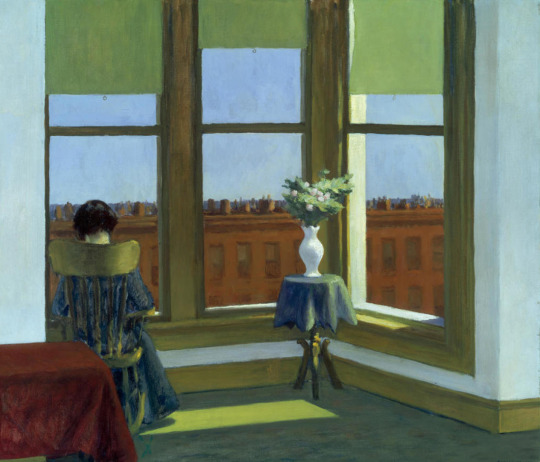
Edward Hopper, Room in Brooklyn, 1932. Oil on canvas.
In paintings we know well and many we don’t, as well as some enlightening works on paper and writings, the artist long described as a Realist is recast as the architect of his own personal fantasy metropolis. He dispenses almost entirely with street life and traffic, ignores skyscrapers and the Brooklyn Bridge, and inserts imaginary buildings where it suits him; he peers in at private apartments from elevated trains and surveys his own neighborhood from rooftops. He turns offices, restaurants and movie theaters into stages for just one or two actors. He paints windows and storefronts without glass, as if he could just reach in and touch the people and things inside.
—Karen Rosenberg in the NY Times, Nov. 22, 2022
Photo: Museum of Fine Arts, Boston
#vintage New York#1930s#Edward Hopper#painting#oil painting#realism#Room in Brooklyn#Hopper's Brooklyn series#Karen Rosenberg#Hopper's New York
206 notes
·
View notes
Text
As America’s borders moved west, empire thus unspooled through farming and homesteading as much as military conquest. [...] The unfamiliar desert ecology and climate meant that they could not easily deploy their trusted models of farming, animal husbandry, and commerce in places with limited access to water, high and variable temperatures, different soil compositions [...]. To address this challenge, empire-builders in early America took Middle Eastern deserts as a key source of inspiration.
Jefferson Davis’ Camel Corps [funded by a 1855 Congressional appropriation to collect camels from around the Middle East and Northern Africa] was one of the earliest examples of how this worked. [...]
American travel writers, explorers, scientists, and government officials had long described the arid West as a local version of the Middle Eastern and North African desert – an “American Zahara” or a Biblical Orient with spiritual and physical power equal to the Old World deserts [...]. These authors harnessed the “Sahara” trope, Catrin Gersdorf argues, “to deactivate the existential anxieties of the pioneers and to alleviate some of their visceral reactions to the American West’s aridity, recasting it as a quasi-Oriental space containing yet unidentified but extremely valuable historical and cultural riches.” Nineteenth-century authors’ constant references to the Sahara [...] helped [...] settlers imagine the newly American desert lands as a “domestic” Orient and, in this way, [...] familiar. [...]
---
[T]he U.S. Army waged overt war [with Indigenous residents] into the early 1900s. Displacing the people from the land was one thing, but redefining their social and cultural association with the desert was a different matter.
Here again, the camel proved useful. This is vividly illustrated when the U.S. Army finally collected enough camels in Texas to run its first Camel Corps trial to assess the animals’ endurance and suitability for military purposes. The Army’s man in charge, General Edward Fitzgerald Beale, brought Hi Jolly, his fellow cameleers, and a large camel caravan together to travel from Texas to California beginning in September 1857. When the expedition stopped in Los Angeles in January 1858, the San Francisco Evening Bulletin described the scene with dramatized gusto:
General Beale and about fourteen camels stalked into town last Friday week and gave our streets quite an Oriental aspect. It looked oddly enough to see outside of a menagerie, a herd of huge, ungainly awkward but docile animals move about in our midst with people riding them like horses and bringing up weird and far-off associations to the Eastern traveler, whether by book or otherwise of the land of the mosque, crescent or turban, of the pilgrim mufti and dervish with visions of the great shrines of the world, Mecca and Jerusalem, and the toiling throngs that have for centuries wended thither, of the burning sands of Arabia and Sahara where the desert is boundless as the ocean and the camel is the ship thereof.
This account actively rewrites the then-dominant imaginary of U.S. West [...], enlisting the camel to transform it into a whimsical vision of the Old World in the New. [...] Colonization was made friendlier by conceiving of it as a pilgrimage, an act of return. [...] In this way, the territories annexed in the mid-1800s could begin to be imagined as a [...] home [...].
---
All text above by: Natalie Koch. “Double Exposure.” Arid Empire: The Entangled Fates of Arizona and Arabia. 2022. [Some paragraph breaks/contractions added by me. Presented here for commentary, teaching, criticism purposes.]
75 notes
·
View notes
Text
~ Monthly BL Breakdown: June 2023 ~
⛱️ Happy July!!! 👗
Disclaimer: ALL shows can be streamed here or here, as well as on Youtube and other platforms. For more info on where to watch what, check out this post!
New breakdowns are coming at the end of every month - feel free to add stuff! -> previous breakdowns

What came out this month? (green = seen/currently watching)
🌟 Let’s Eat Together - June 2nd (Japan)
🌟 Ever After - June 3rd (Philippines)
🌟 Tin Tem Jai (Special Episodes) - June 3rd + June 4th (Thailand)
🌟 Twins - June 6th (Thailand)
🌟 Love Tractor - June 7th (South Korea)
🌟 Stupid Genius - June 9th (Vietnam)
🌟 Moonlight Armour - June 10th (Philippines)
🌟 Aedan - June 12th (Philippines)
🌟 Tokyo In April - June 15th (Japan)
🌟 The Internship (movie) - June 22nd (Thailand)
🌟 His Man Season 2 (dating show) - June 23rd (South Korea)
🌟 A Story to Remember - June 23rd (Philippines)
🌟 Tie the Not - June 24th (Philippines)
🌟 Dinosaur Love - June 25th (Thailand)
🌟 One in a Hundred (international release) - June 29th (China)
Monthly likes/dislikes
❣️ ø
👎🏻 La Pluie - Sadly I had to drop this one because I got super bored by it. It had a very interesting premise and the first 2-3 episodes were solid but then it deflated. Them revealing Pat as the soulmate so soon was a fatal mistake imo, they should have leaned more into the mystery of who he is to Saengtai etc. The story with Lomfon and Saengtian had an interesting start as well but then went nowhere. It’s a pity because I thought they were onto something with this show. oh well.
New series & movie announcements
🎥 Beyond the Star - Date TBA (Thailand)
🎥 The Rebound (produced by AllThis Entertainment) - Date TBA (Thailand)
🎥 My Imaginary Boyfriend (novel adaption) - Date TBA (Thailand)
🎥 Choco Milk Shake Season 2 - Date TBA (South Korea)
🎥 The Only One (novel adaption) - Date TBA (Taiwan)
🎥 So-And-So (novel adaption) - Date TBA (Taiwan)
🎥 Beyond the Duo (movie) - Date TBA (Myanmar)
🎥 The Bartender - Date TBA (Myanmar)
🎥 Kiseki: Dear to Me - Date TBA (Taiwan)
🎥 Dear Dopamine - Coming 2024 (Thailand)
🎥 90's Boyfriend - Date TBA (Philippines)
🎥 Jazz for Two - Date TBA (South Korea)
🎥 My Dear Gangster Oppa (starring MeenPing) - Date TBA (Thailand)
🎥 Spirit Reborn - Date TBA (Thailand)
🎥 My Momentary Wish - Date TBA (Thailand)
🎥 Mr. Cinderella Season 2 - Coming September 2023 (Vietnam)
🎥 Love of the Sea - Date TBA (Myanmar)
Other news from the BL world
❗️ The upcoming GMMTV BLs Dangerous Romance, Only Friends, Last Twilight and Cooking Crush as well as the WabiSabi production Absolute Zero have started filming.
❗️ Actor Build Jakapan announced his withdrawal from the upcoming BL 4 Minutes due to the events that have occured over the last few months and his resulting departure from BOC. It’s unclear whether or not his co-star Bible Wichapas will remain a part of the project and get a new acting partner or if the project will get cancelled altogether.
❗️ The upcoming Domundi BL Love Upon a Time released its pilot trailer.
❗️ A second season for the Korean BL Choco Milk Shake was announced. Further details are unknown.
❗️ The members of the kpop group OnlyOneOf will star in the upcoming Korean BL Bump Up Business. Further details are unknown.
❗️ Actor Frank Thanatsaran announced that he will not be reprising his role as Itt in the upcoming sequel Love Syndrome: The Beginning. His role will be recast. It was announced that instead, he will star in the upcoming BL The Rebound, where he will be paired with Nammon Krittanai. The series will be produced by AllThis Entertainment and will be directed by Golf Tanwarin. (The Eclipse, 609 Bedtime Story)
❗️ A spinoff for the Korean BL Unintentional Love Story was announced. Further details are still unknown.
❗️GMMTV has announced the following cast changes for their upcoming BLs:
Only Friends: Piploy K. will be replaced by Lookjun B. (role of น้ำเชื่อม)
Cooking Crush: Mark P. will be replaced by Aungpao O. (role of Dynamite)
❗️ Y MOMENT Entertainment Thailand has announced their lineup for 2023/2024:
Low Frequency - Coming July 2023
Venus in the Sky - Coming September 2023
Kiseki - Coming 2024
Time - Coming 2024
Lovely Addict - Coming 2024
Beyond the Star - Coming 2024
❗️ Actor Ja Pachara has decided not to renew his contract with his agency 888 Entertainment. He will continue to work as a freelanced artist.
❗️ The upcoming horror/fantasy BL movie After Sundown released its official trailer. The movie will star ZeeNunew and will be released in Thai cinemas on July 20th.
❗️ The Thai BL A Boss and a Babe won in the category “Rising BL series” at this year’s Asia Top Awards.
❗️ The ongoing filming for the upcoming Special Edition of Chains of Heart has been suspended due to intractable scheduling conflicts of the main actors. The project has been cancelled.
❗️ The long awaited Thai remake of the Japanese BL Cherry Magic (starring TayNew) will air in 2024. According to cast + crew, after a long struggle with copyright issues, the trailer will be released shortly. Filming will start at the end of the year.
Upcoming series & movies for July:
👉🏻 Be Mine SuperStar (starring JaFirst) - July 3rd (Thailand)
👉🏻 Minato Shouji Coin Laundry Season 2 - July 5th (Japan)
👉🏻 Stay by My Side - July 7th (Taiwan)
👉🏻 Stay With Me - July 7th (China)
👉🏻 Low Frequency - July 8th (Thailand)
👉🏻 Hidden Agenda - July 9th (Thailand)
👉🏻 Club Friday: Moments and Memories - July 9th (Thailand)
👉🏻 Laws of Attraction - July 15th (Thailand)
👉🏻 Wedding Plan - July 19th (Thailand)
👉🏻 After Sundown (starring ZeeNunew) - July 20th (Thailand, cinema-release)
👉🏻 Jun and Jun - July 20th (South Korea)
👉🏻 Stay Still The Series - July TBA (Hong Kong)
👉🏻 The Star Season 2 - July TBA (Myanmar)
#doreens monthly bl breakdown#thai bl#bl drama#upcoming bl#update#bl news#boss and babe winning that award........i have no words honestly#who was in the jury? monkeys?? fml#june has been a huge letdown tbh#nothing good#im gonna need july to be better please#putting all my hopes into hidden agenda 🥺
53 notes
·
View notes
Text
A Marauders fancast
I am not recasting anything. I love the cast as it was, movie or old fancast wise. So I tip my imaginary hat to
the fancast Sophie Skelton
The actress Geraldine Somerville
Lily Evans


Despite that I find a great fancast for young Lily


Violet Brinson
She got that pretty but visious look Lily is known for
38 notes
·
View notes
Text
Cerberus Project is literally Fairyland's sculpting team, who created the company Fairyland after splitting from Luts. If you're gonna grasp at straws to justify owning a recast, at least try and make straws that aren't imaginary 😭
~Anonymous
13 notes
·
View notes
Text
New Powerpuff/Foster’s Reboot Watch 7/29/2022
Ever since the announcement of the new reboots, Craig McCracken has answered a few questions about them on his Twitter. He’s not going to break any NDAs, and none of this should be considered set in stone. I would not put any of this on a wiki.
In response to someone asking if PPG 202X is going to be a revival or a reboot, McCracken joked that it may be a rebovial.
In response to someone saying Cartoon Network should have continued PPG 2016, Craig McCracken responded that he’s not going to continue something he wasn’t involved in, and that he’s going to continue where he stopped.
PPG 202X has yet to start development, and hasn’t been picked up by Cartoon Network yet. Expect to wait more than a year for them. The same is true with the Foster’s reboot.
The Powerpuff Girls will not be teenagers in the new show.
He intends on bringing back all of the original cast. (He would have to recast the retired Tom Kane and the late Chuck McCann, though it’s still way too early to consider who will be their replacements.)
The Foster’s reboot will be focused on stories that happen within Foster’s Home while Mac is still at school, so McCracken doesn’t expect Mac to appear.
As implied by not even being picked up by Cartoon Network yet, Foster’s being a preschool show focused on younger and new imaginary friends is McCracken’s idea, and not an idea foisted on him by execs. He adds that becoming a parent made him want quality animation for the little ones.
He hasn’t shown Cartoon Network any of his new ideas.
We’re definitely in the very, very early stage of both of these reboots despite that big announcement from Variety. There’s more news to come, so stay tuned.
48 notes
·
View notes
Text
My Cast For A Modern Day Freddy's Dead: The Final Nightmare
This topic has been on my mind since the 2010 remake of the original A Nightmare on Elm Street came out, due to all of those rumors circulating from around that time of a sequel to said remake, which would combine Freddy's Revenge and Dream Warriors together...somehow? Anyway, I got to thinking about a potential Freddy's Dead remake, and what that would look like/who the potential cast would be for such a thing.
For this casting list, I will:
Not be trying to rewrite the characters I'm casting. For example, I'm not going to say that Spencer's genderfluid/gay/has ADHD because those are things that I headcanon him to have, and they're not brought up in the canon of the original movie.
Not be rewriting the plot of Freddy's Dead. That is not the point of this post at all, and also that is at least an AU fic on AO3's worth of writing, and I'm already trying to plan that out.
Make my choices based on an actor's visual resemblance to the original characters mostly. If there are other resemblances, such as personality or vocal, I will point those out too.
Not be including any cameo characters (ie. Alice Cooper as Mr. Underwood or Roseanne and Tom Arnold as that crazy Springwood couple) because there are too many, they are insignificant, and we'd be here for a while. I also will not be recasting Freddy himself, as I have an attachment to Robert Englund's Freddy.
THESE CHOICES ARE PURELY MY OPINION! If you don't agree with my decisions, or if you actually have another actor/actress for the character I list, feel free to leave them in the replies.
Okay, with all the disclaimers and explanations out of the way, let's start things off here with the main four teenagers. So that's John Doe, Carlos Rodriguez, Spencer Lewis and Tracy Swan.
John Doe - Joe Keery
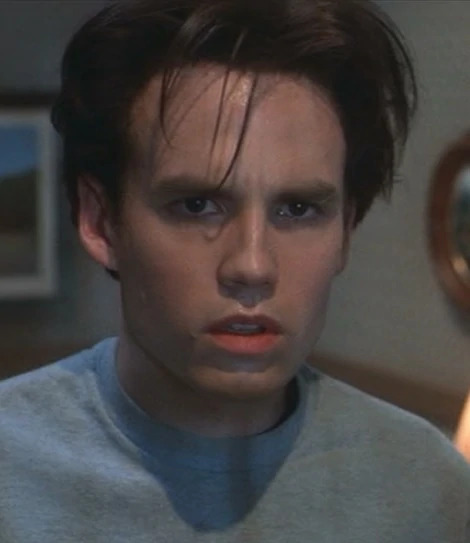
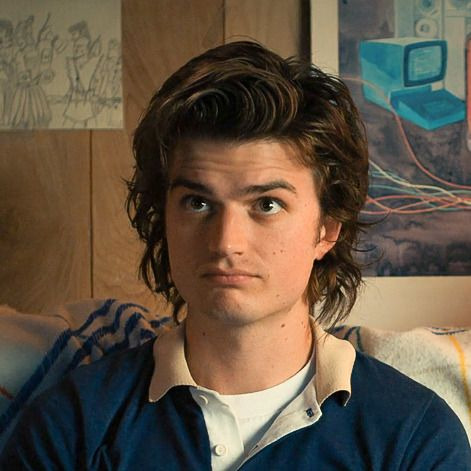
Starting off with the blank slate fake protagonist character probably wasn't a good idea, but here we go. Totally didn't have same problem as I did with Tracy /s. I actually had Jake T. Austin in this slot last night, but after sleeping on it, and doing the other three teenagers, I changed my mind and decided to look at other options. Looking at those other options led me to Joe Keery, specifically when he played Steve Harrington in Stranger Things.
Freddy's Dead's John Doe really isn't out of Joe Keery's wheelhouse when you think about it. He played Steve Harrington, a teenager who fought the modern day equivalent to Freddy Krueger, and John Doe died by the actual character of Freddy Krueger. The physical resemblance between them is clearly there, Joe's hair is a little longer, and he has a slightly smaller face shape, but that's about the only differences I can see. John Doe and Steve also deal with people not believing them when referring to supernatural happenings that are currently occurring/literal fucking demons wrecking havoc on a town they're from. Also John is canonically the oldest teenager in the movie, being 18 years old, and Steve was 19 during Stranger Things season 4. So Joe Keery is no stranger to playing characters younger than he is in real life.
Carlos Rodriguez - Omar Rudberg


Do I even need to explain? LOOK AT THIS PHYSICAL RESEMBLANCE! THEY ARE THE EXACT SAME PERSON???? IT'S SO UNCANNY!!
When I first saw Omar Rudberg in Young Royals pictures and gifs, I literally only saw a modern version of Carlos. Then I discovered this picture of him in this outfit on Pinterest, and I remembered this outfit Carlos wore in the beginning of Freddy's Dead, and it only solidified my brain's decision for me.

Here's a bonus pic of Omar in a hoodie that's very similar in hue to the one Carlos wears for the rest of the movie :)
Speaking of Young Royals...
Spencer Lewis - Edvin Ryding
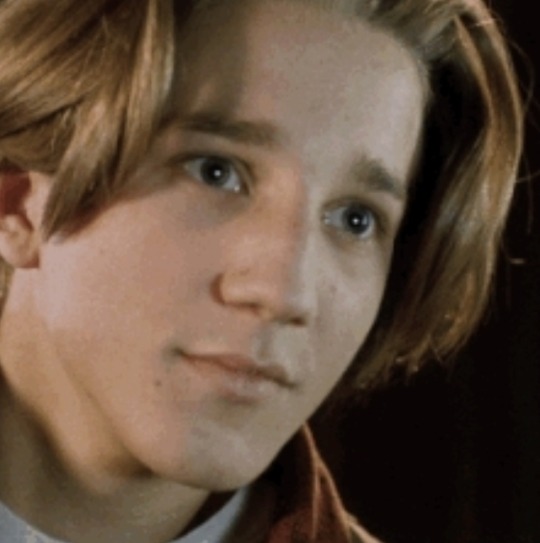

Y'all I had such a hard time with Spencer. There was almost no one that looked like Spencer in the modern age, which is surprising given that long hair on guys is still a fairly popular trend, but I finally decided to give this imaginary recasted role to Edvin Ryding. While Edvin may not look exactly like a young Breckin Meyer, he still has that essence of Spencer's general appearance, in my opinion. Also, Edvin has already partially played Spencer's character type in Young Royals as Prince Wilhelm. By character type, I mean someone of an affluent background struggling with being themselves and rebelling against the traditions, standards, and or expectations set by those before them. Also Omar Rudberg is Carlos in this imaginary recasting, so Edvin being here also just seems right for that reason.
Tracy Swan - Hunter Schafer


Ah Tracy...Tracy, Tracy Tracy. You were a challenge too, but for the opposite reason of Spencer. While Spencer had almost no one that looked even remotely like him, you had WAY TOO MANY options for me to pick from, I essentially went from a drought to a flood. Anyways, I chose Hunter Schafer for the role of Tracy mainly for her appearance, plus Jules Vaughn looks like a girl who can whoop an ass despite looking like a twig. Also, Hunter just has that natural look on her face that screams "I don't give a flying fuck about what you're saying, leave me the fuck alone."
Moving on to the two main adult figures in the movie, beyond the kids' parents and Freddy because I already said I'm not including them here, Dr. Maggie Burnham and Doc (why the hell did they not give him a real name????)
Dr. Maggie Burnham - Winona Ryder

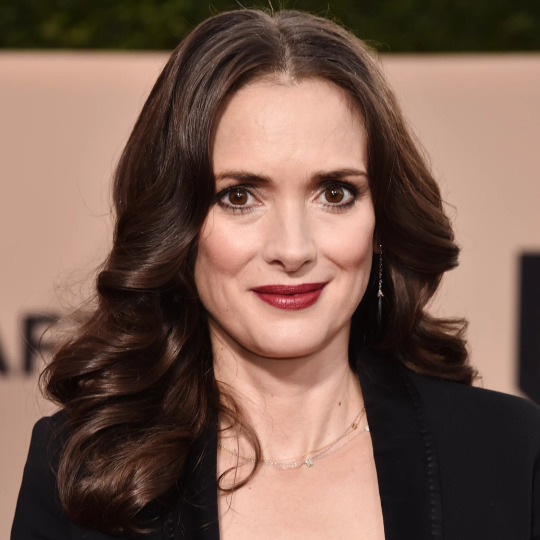
I have no other justification for this than physical resemblance. I mean, this could also be my brain processing voices weirdly, but Lisa Zane and Winona Ryder sound extremely similar to each other. Winona Ryder was also a 90's staple actress, so I felt like it would be appropriate for a remake/recasting for an early 90's movie to include her. She's already playing a motherly/authoritarian role to a bunch of kids that aren't hers in Stranger Things, too, so that checks out. No, including her and Joe Keery in the same list was not intentional.
Doc - Eamonn Walker
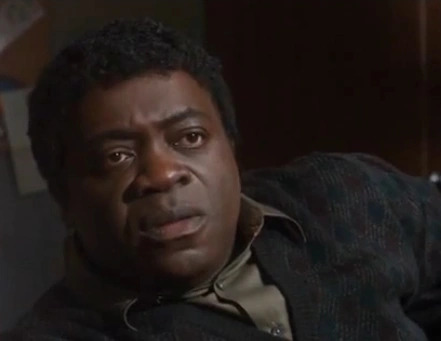

(I used this pic of Eamonn because almost every time we see Doc he's in the gym training with Tracy.)
I already knew this one was going to be difficult, as no one can truly replace the great Yaphet Kotto. However, for this recasting I had to, so for Doc I chose Eamonn Walker! For those who don't recognize Eamonn, he plays Chief Boden on Chicago Fire. I only know who he is because my mother is obsessed with the Chicago trilogy of shows. I will make the note that Eamonn and Yaphet once again sound very similar to me.
So there's my modern day recasting of the main six characters of Freddy's Dead: The Final Nightmare! Like I said, I wasn't going to include Freddy himself, or any of the cameo characters. We would have been here forever if I were to do that, and this recasting alone took me two days to do, so yeah.
((Since I'm a masochist if you want to know who I'd cast as the kids' parents in the modern day, lmk))
2 notes
·
View notes
Text
Episode 427: I object

View On WordPress
#abigail collins#actor looks directly into camera#alexandra moltke#alexandra moltke isles#clarice blackburn#courtroom drama#dark shadows#dark shadows before i die#dumb vicki#frederic forrest#harvey keitel#idiot plot#imaginary recasting#jerry lacy#new set#peter bradford#roger davis#smart character#soap opera law#the rev&039;d mr trask#victoria winters
2 notes
·
View notes
Text
recast of daydream believer where they get the guy who plays mike in daydream believers as imaginary!mike
4 notes
·
View notes
Note
I think it is so annoying when you say you bought a recast of a doll and someone is like "well but you still don't own that doll, stop lying" Like??? I bought a replica of Starry Night from Van Gogh from a museum because I like the look. Do you think I care that Van Gogh didn't personally kiss this painting goodbye before I bought it? I care about the look, not the name or some imaginary status. The recast companies could call the doll whatever, I really don't give a single fuck about the name.
They're running low on arguments to defend their points of view, that's all.

14 notes
·
View notes
Text
Kishi Nobusuke’s Bandung of the right
Excerpted from "The conservative imaginary: moral re-armament and the internationalism of the Japanese right, 1945–1962" by Reto Hofmann

In 1962, MRA launched its Asia Center in Odawara, Japan. Perched on a hill overlooking the Pacific Ocean and designed by a Swiss architect, Charles Rudolph, MRA no doubt modelled Odawara on Caux – as a place made to impress.26 Indeed, the inauguration ceremony spoke of the connections and the high profile the movement had built in the 1950s across Asia (Figure 3). The long list of guests included Kim Jong-pil, the head of the Korean Central Investigation Agency (KCIA); Truong Cong Cuu, Minister of Culture of Vietnam; General He Yingchin, a close aide of Chiang Kai-shek, from the Republic of China; U Narada, a Burmese monk; and representatives from forty-two countries, including Australia, South Africa, Malaya and Korea. Among Japanese dignitaries figured the sitting Prime Minister, Ikeda Hayato, as well as his predecessors, the aging Yoshida Shigeru, and, crucially, Kishi Nobusuke: he had been instrumental, during his prime ministership from 1957 to 1960, in setting up the Asia Center as he flirted with MRA as part of his vision to recast Japan as a hub for Asian regionalism.
Broadly speaking, the MRA Asia Center was the product of three intersecting forces. First, having made a name for himself in the West, Buchman determined to apply European lessons to Cold War Asia and, as seen in MRA’s courting of Hatoyama, decided to make Japan into its linchpin. In a report dated 17 July 1953, barely a week before the end of the Korean War, MRA stated that ‘Asia has to start all over again’. In the face of communism, greed, and poverty, MRA’s ‘moral ideology’ was the ‘only superior alternative offered to Asia’ – ‘only “heart-washing” will supersede “brain-washing”’. In this vision, Buchman earmarked a special place for Japan, calling it the ‘light of Asia’.
Second, Odawara must be regarded in the shadow of other pushes for Asian regionalism in the 1950s, such as the Colombo Plan, SEATO, and, in particular, the Afro-Asian Conference held in Bandung in 1955. At the Bandung Conference, as it is more commonly known, the participants strove to forge unity among Asian and African nations in order to remain non-aligned in the Cold War. As pointed out by Miyagi Taizo, for Japan, which was in Asia but closely tied to the United States, Bandung raised an old dilemma: was Japan part of Asia or the West? Put differently, Bandung offered Japan the prospect to ‘return to Asia’, but, at the same, embracing Bandung-style neutralism was impossible given Japan’s alliance with the United States (Miyagi 2001, 10–17). To reconcile this contradiction, Kishi envisioned an Asian regionalism centred on Japan and the MRA Asia Center was integral in this plan.
Third, Kishi’s promotion of the Asia Center reveals the postwar history of Pan-Asianist ideology within the conservative establishment. Kishi, the political scientist Richard Samuels has argued, ‘personified Japan’s transwar continuities’ (Samuels 2003, 141, 248). Also nicknamed the ‘monster of Showa’, he epitomized the survival of right-wing thought not just as far as domestic politics were concerned, but also, and perhaps especially, in his vision of Asia. Throughout his life, Kishi praised Kita Ikki, Japan’s foremost fascist thinker, Okawa Sh umei, the Pan-Asianist guru, and Uesugi Shinkichi, the promoter of an emperor-centric interpretation of the Constitution (Kang and Hyun 2016, 32–33). In the 1930s, Kishi became a top ‘reformist bureaucrat’ in Manchukuo, where he made it his goal to build a ‘fascist economic policy’ that would undergird Japan’s ‘security state’ (kokubo kokka) and its hegemony in Asia – ‘Manchuria was my masterpiece’, he remarked.27 From Manchurian bureaucrat, Kishi turned wartime politician in Toj o Hideki’s cabinet. As an expert planner, he led the Ministry of Munitions, the forerunner of the postwar Ministry of International Trade and Industry (MITI).28 Coming closer than anyone to an ‘imperial fascist’, Kishi was arrested by Occupation authorities and imprisoned as a suspected Class-A war criminal, but released without charges by Occupation authorities in 1948. He returned to political life in 1952 and became prime minister in 1957.
While Kishi professed himself a ‘democrat’, it is clear that, as Kang SangJung observed, ‘a thought core straddled [Kishi’s] pre and postwar’, namely a ‘patriotism’ that was grounded in state power and ‘national pride’.29 Asianism, too, remained a constant in Kishi’s thought – until old age he remained firm that the ‘fundamental principles’ behind the East Asian Co-Prosperity Sphere were ‘not mistaken’ (Iwami 1994, 193). In the postwar period, Asianism was, in fact, bound up with patriotism. For Kishi, just as postwar Japan had to free itself from the US-drafted ‘colonial Constitution’ to regain its honour, so it had to reconstruct a sphere of interest through a ‘medium-sized imperialism’ to feed its population.30 But, given that the age of formal empires had passed, Kishi resolved to turn to more informal solutions to recast Japanese power, such as that presented by the MRA Asia Center.

Kishi earmarked Southeast Asia as Japan’s new sphere of influence in Asia. That is why, upon becoming prime minister in 1957, he visited Southeast Asian leaders even before flying to Washington (he wanted to make it clear to president Eisenhower that Japan was still the ‘centre of Asia’, or, as he put in private, that ‘Japan stands alone, like Mount Fuji, to dominate in Asia’).31 As it turned out, however, Kishi’s Southeast Asian diplomacy faced a hurdle. While during the two trips undertaken that year he settled some questions of wartime reparations, Southeast Asian leaders were by and large reluctant to sign up to the Asian Development Fund, the tool whereby Kishi hoped to integrate the region into Japan’s economic sphere. There was, especially in countries such as Burma, Indonesia, and the Philippines, which had been subjected to brutal Japanese occupation in the Second World War, much lingering resentment toward Japan. It did not escape Southeast Asian leaders that Kishi’s strategy bore parallels with the Greater East Asia Co-Prosperity Sphere, anathema also because they believed that their new-found political independence hinged on economic independence. Kishi’s proposals, as the Manila Times commented, came with ‘inbuilt boobytraps’ (Kurzman 1960, 319; Hatano and Sato 2007, 58–59).
The setbacks he encountered in his Southeast Asian diplomacy explain why Kishi turned to MRA. To rebuild an Asian regionalism centred on Japan it was of paramount importance that the countries of Southeast Asia ‘trusted’ Japan.32 MRA were reconciliation specialists, with established networks across Asia, who appeared capable to bring to fruition informal diplomacy where the official one had hit a wall. Kishi had recognized MRA’s mastery of the art of public diplomacy since the early 1950s and appointed staff with MRA connections. He had been privy to the numerous MRA initiatives – he attended the performance of The Vanishing Island in 1955, seemingly at the invitation of the actress and singer Tanaka Michiko, a member of the cast and, reportedly, a ‘close friend’ (Entwistle 1985, 147). The politician Hoshijima Niro, an active member of MRA as well as ‘confidant’ of Kishi, also seems to have kept the prime minister updated with MRA activities (Entwistle 1985, 147). He also appointed the ex-Governor of the Bank of Japan Shibusawa Keizo, a central MRA member, to promote economic diplomacy in Southeast Asia (Kishi 1983, 384).
MRA opened crucial avenues to an informal diplomacy of reconciliation with Asian countries through personal channels and practices of compromise. The first instance of Kishi reaching out to it came, not coincidentally, in 1957, the year he launched his Asian diplomacy, by becoming involved in an MRA conference in Baguio, the Philippines. Organized by the core Japanese activists in collaboration with the Filipino section of MRA, the Baguio conference was intended to provide a forum for an unofficial gathering of personalities from Southeast Asia, Korea, and Japan in order to come to terms with past grievances, whether Japan’s wartime atrocities or its colonial rule. MRA lobbied politicians, including Kishi and President Magsaysay, to support the event.33 According to MRA sources, after the ‘former oppressed’ people met the Japanese MRA delegation, participants broke down in tears and proffered forgiveness. Most dramatically, Hoshijima, who attended with Kishi’s ‘consent,’ handed over a Korean national treasure – an ancient stone lion that had belonged to the last Emperor of Korea – to the Koreans as a symbolic gesture. He added that he would ‘go directly back to the Prime Minister and tell [him] that Japan must settle the claims that they now hold in Korea to property and monies’.34 Until then, in fact, the Japanese government had advanced property claims in Korea and claimed that its rule had been economically beneficial for Korean development – two positions that profoundly angered the Korean position. After Baguio, however, Kishi reportedly promised that he had ‘no intention of holding to our past legal interpretations’ and that he would withdraw the Kubota statement.35 It would not be until 1965 that Japan and Korea formally resumed diplomatic relations, but Kishi’s earlier unofficial diplomacy shows his determination to mend fences as a first step to reposition Japan to power in Asia.
In later years, Kishi pursued an ever bolder collaboration with MRA. All these initiatives were presented under the umbrella of Asian regionalism. In May 1959, for example, MRA held a conference in Otsu, near Kyoto, to discuss such questions as the ‘unity of Asian nations’, the ‘creation of an Asian continent that gives an answer to a divided world’, and the ‘purification of our nations from top to bottom, in order to give them the certainty of an incorruptible leadership’. Supporting messages were sent by Ngo Dinh Diem, the president of the Republic of Vietnam, the former prime minister of Burma, U Nu, and the General Secretary of the Arab League, Abdel Khalek Hassouna. Kishi welcomed the attendees, writing that ‘I have great respect for MRA, because it builds unity among nations on the basis of morality’.36 It was with these goals in mind that Kishi matured the idea of supporting the MRA Asia Center in Odawara.
Our conventional knowledge of Kishi ends with this resignation after the ANPO protests in 1960, but he continued his involvement in politics behind the scenes, and his fight for an Asian regionalism of the right is one such example. Having intervened for the MRA Asia Center as prime minister, he also championed it in later years, as emerges from a letter Kishi sent to the South Vietnamese strongman president, Ngo Dinh Diem, probably in early 1962. Kishi praised Diem’s ‘statesmanlike action’ to invite Japanese students to stage the MRA play The Tiger. He declared himself ‘convinced that now more than ever before the free people of Asia must unite in a common bid to save freedom, and this play is such an action’. He then urged Diem to attend the inauguration of the MRA Odawara Center. ‘Odawara, he explained, will be the first center in Asia wholly dedicated to training leadership in all fields and the youth in an ideological answer to Communism’.37
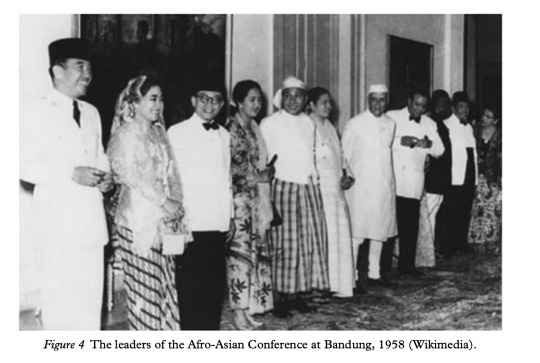
Kishi’s embrace of MRA, however, went beyond simple Cold War logic. The encounter between MRA discourse and Kishi’s Pan-Asianism led to a grey area of conceptual ambivalence, as seen in the meanings attached to ‘East’ and ‘West’. MRA envisioned Japan as a ‘third way’ between East and West, understood in Cold War terms, where East referred to the Communist bloc and West to the Free World. Conservatives such as Kishi, however, gave East–West a different meaning, much in line with the prewar rhetoric of East as Asia, and West as Euro-America. As argued by Ikeda, for example, when Foreign Minister Shigemitsu Mamoru talked in those years about ‘Japan as a bridge between East and West’, he meant that Japan would ‘reconcile Asian anticolonialism with the countries of the West’. Kishi’s mantra of ‘Japan as a member of Asia’ needs to be seen in the same light – that it was ‘Japan’s special place and mission’ to mediate between these two civilizations (Ikeda 2016, 38). Kishi, in other words, co-opted MRA rhetoric to repurpose the ideology that underpinned the Greater East Asia Co-Prosperity Sphere for which Kishi had worked with conviction during the Second World War.
Ultimately, MRA, and its Asia Center in particular, added legitimacy to Japan’s wartime Pan-Asianism, by staging Asian unity through an aesthetics that evoked simultaneously the tropes of the Greater East Asian Co-Prosperity Sphere and those of the Bandung Conference (Figures 4, 5, and 6). As Naoko Shimazu has argued, the Bandung Conference developed important rituals and symbolism to present the ‘esprit de corps’ of newly independent nations and, in so doing, remained a model for a ‘variety of post-colonial experiences’ (Naoko 2014, 1, 6). Indeed, the imagery of Asian leaders at Bandung, which cast them as subjects of history – forward looking, diverse yet united – was also appropriated by MRA with the crucial difference that Japan, through Kishi, was added into the mix. Odawara was Kishi’s response to Bandung – it was a Bandung of the right, part of his vision to move Asia, and Southeast Asia in particular, away from the neutralism of the non-aligned movement and to tie it instead to a regional order in which Japan was the linchpin. At Bandung, Japan had played a marginal role, largely as observer; Kishi was determined to restore it to a central place.38 But this co-optation meant recapturing the aesthetics of the discourse of the Greater East Asian Co-Prosperity Sphere, in which Japan played the role of the leader of Asia. In hijacking the symbolism of the Bandung Conference through MRA, Kishi proposed a vision of Asia that ran counter to Bandung itself, and which lent legitimacy to Japan as an independent actor in Cold War Asia.
#asia#southeast asia#japan#east asia#south korea#korea#pan-asianism#nobusuke kishi#kim jong-pil#kim jong pil#right-wing politics#politics#moral re-armament#Greater East Asian Co-Prosperity Sphere#fascism#world war ii#history#burma#indonesia#the philippines#philippines#japanese nationalism
0 notes
Text
A Marauders fancast
I am not recasting anything. I love the cast as it was, movie or old fancast wise. So I tip my imaginary hat to
The fancast Alicia Vikander
My forever fancast

Despite that I kinda like two options
Milly Alcock


For the emo, Bad girl persona she is


Giorgia Whigham
For the messy but pretty sarcastic side
I really cant decide
23 notes
·
View notes
Text
Shadow and Bone S2 E4 recap
Spoiler alert
Oh, they did a recasting for Vasily who now has dark hair, unlike his parents.
Alina dislikes Vasily but offers to lead the Grisha since the Lanstovs want a Second Army commander loyal to them and she is Nikolai’s fiancée. Mal is against this as making her General will put an even bigger target on her back but Alina wants to protect the Grisha. Vasily manages to learn about Malina since they were having a moment in a hallway rather than a room.
Genya still looks beautiful to me. Her and Kirigan’s scars do not make them ugly. Frankly I’m more worried about Baghra’s finger and Genya’s right eye. Seriously Kirigan, you could have chosen a lighter punishment for your mother! Imprisonment was enough! Baghra seems to care about Genya now. Aleksander calls out Baghra for protesting his plans because she made him this way. Baghra finally gives up on him.
I have my doubts about Vladim. It looks like he wants Baghra’s power. And the bone crushing scene was horrifying.
David warns Alina and she imprisons him after Nadia informs her that Kirigan keeps his close. Honestly, if that was obvious, he would make a horrible choice for spy. David refuses to teach Alina merzost but warns her about the tether.
Nina knows Pekka cannot free Matthias and warns Kaz. Kaz has released a fake firepox that will be blamed on Pekka and threatens his son Alby.
Wow, we actually got the Pekka showdown in Crooked Kingdom without the Jurda yet…
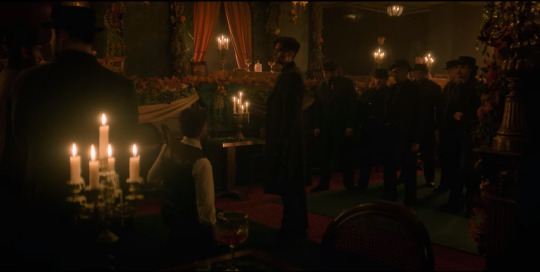
Pekka loses the respect of his men
Mal wants to find the special blade that might kill nichevo’ya. I’m not gonna say the name cos then I have to repeat it and it’s long. Anyway, Tolya and Zoya will go to the Crows to hire them for the job. Unless the blade was made with merzost, it will be useless.
Vasily did his research and has Mal arrested for desertion. Dude, if you’re going to seduce Alina, don’t arrest her boyfriend! He is an idiot. I’ve said it before and I’ll say it again.
Jesper and Wylan kiss! 😄 now where are Ivan and Fedyor?
Kaz kicks Inej out of the Crows after she made him worry with a detour. She is a free woman.
Seriously, Nikolai giving Alina her ring has more chemistry than Malina. Alina starts getting worried about Mal’s absence, but no one is as concerned as she is.
Oh, the siege and storm ending is here too. Only it’s at an engagement party rather than Nikolai’s birthday. And it’s still Vasily’s fault. Honestly, if he actually becomes king, Fjerda will crush him. I doubt even Kirigan could have reined him in if he were still General. Vasily dies and I’m not sure if the king still lives. Kirigan lures Alina away with an illusion so she will be away from the fighting and her head does some weird glowy thing. To Adrik, she must look unstable.
While the invasion happens, Baghra takes advantage and frees herself and Genya, who heals her missing finger. (Seriously Kirigan, fixing her finger would have been better than figs!) Genya sees her reflection and destroys the Alkemi’s workstation in a fit of rage.
You know the Darkling confrontation at the end, his S&S speech would work if Mal had been frightened of Alina’s power. But here it seems out of place. And considering book Alina had grown used to her imaginary Darkling, the offer to rule suited the book better than the show. It looks lika Nadia and Adrik are the only members of the Second Army who survived the engagement party. I don’t count Tamar and Alina since Tamar isn’t loyal to the second army, she’s loyal to Alina, and Alina wants to retire once the Fold is gone.
This certainly was a combo of endings from Crooked Kingdom and Siege and Storm. Looks like we get the Ruin and Rising arc next. This was too crammed, considering Alina’s relationship with the Darkling. His speech at the end is so out of place.
Well I can say this for Tatiana, she does love Nikolai, I think.
I actually prefer book Baghra. I have not forgotten that Baghra only gave partial truths to Alina when Anastas was to blame for the Fold, and that she tried to kill Mal. The fact that Baghra gives up on her son now makes me unhappy. If you’re responsible for how he came to be, you don’t give up, you try to save him.
Poor Tolya. None of his friends like poetry
Pekka is a villain for sure but he does love his son and while I think it is good he knows his son is alive, I find that having Alby witness his arrest is too cruel.
Ooh, is David back under Kirigan’s power now?
0 notes
Text
I gather we’re going over open basic issues. Last night, I began thinking about translating the Basel problem solution of Pi squared divided by 6 into gs terms. There seem to be two keys. One is that a gs is a ‘circle’. Or rather it’s the concept of Pi as it appears in a variety of ways, whether in a circle or as the smallest positive number that fits to the imaginary unit circle, meaning as an exponent of e. This is coordinate rotation. I got that.
And that lays out well if you think of a line with 1 above and n below, meaning not as a division, but as simple listing or count of squares. That meant something, but I don’t remember what right now.
Then I thought: because this rotates, then we’re saying this process counts a rotation. Got stuck on that until I realized: the process means the 1Space grid square lines become Pi. This is abstract. The idea is 1Space counts and 0Space counts, so the 1Space takes on the 0Space measure. In other words, there is a square whose sides connect End-to-End not so the rotation of one corner moves to another, but so the relationship remains 1Space through the count into the infinite n. That makes not only a square, but also opens the door to higher cases like to the 4th, which appears when you count the other 2 sides of this abstracted grid square .
This understanding fits into the general flow, which has become remarkably well organized or ordered, with each new piece fitting exactly to the last. In this case, we identified fCM as appearing in dimensions, which is remarkable. And that fit to the location of the bip pole at ½, at the midpoint gs layer, which then composes with the integer gs layer. Now we have recast the Basel problem in 1Space terms. We had the SBE part earlier, but now it makes much more sense because now it’s counting over a more obvious identity defined by that area.
I hope to flesh this out later today.
Added: I realized my hips hurt because I decided to do a deep squat, below parallel, without weight, because my knee should now be able to do that. It can. And it stretched some fascia. And the 2 days result is that I can stand up straighter, with my stomach naturally pulled up and thus in, without any of the past effort. That is cool. I’m also suddenly down to 145 without working at it.
0 notes